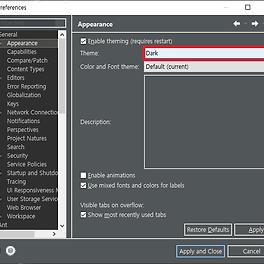반응형
package Exception;
import java.util.Scanner;
public class DivideByZero {
public static void main(String[] args) {
System.out.println("두 개의 정수 입력 : ");
Scanner keyboard = new Scanner(System.in);
int num1 = keyboard.nextInt();
int num2 = keyboard.nextInt();
try {
System.out.println("나눗셈 결과의 몫 : "+(num1/num2));
System.out.println("나눗셈 결과의 나머지 : "+(num1%num2));
} catch (ArithmeticException e) {
System.out.println("나눗셈 불가능!");
System.out.println(e.getMessage());
}
System.out.println("프로그램을 종료 합니다.");
}
}1. 자바 가상머신이 0으로 나누는 예외상황이 발생했음을 인식
2. 이 상황을 위해 정의된 ArithmeticException 클래스의 인스턴스를 생성한다.
3. 이렇게 생성된 인스턴스의 참조값을 catch 영역에 선언된 매개변수에 전달한다.
■ 예외상황을 알리는 클래스는 모두 정의가 되어 있나요? 일단 초보니까 몇개만 알도록 하자
|
⊙ 배열의 접근에 잘못된 인덱스 값을 사용하는 예외상황
|
→ 예외 클래스 : ArrayIndexOutOfBoundException
|
|
⊙ 허용할 수 없는 형변환 연산을 진행하는 예외상황
|
→ 예외 클래스 : ClassCastException
|
|
⊙ 배열선언 과정에서 배열의 크기를 음수로 지정하는 예외상황
|
→ 예외 클래스 : NegativeArraySizeException
|
|
⊙ 참조변수가 null로 초기화된 상황에서 메소드를 호출하는 상황
|
→ 예외 클래스 : NullPointerException
|
■ 예외상황의 발생여부와 상관없이 항상 실행되는 영역 : finally
package Exception;
public class FinallyTest {
public static void main(String[] args) {
boolean divOK = divider(4, 2);
if (divOK)
System.out.println("연산 성공");
else
System.out.println("연산 실패");
divOK = divider(4, 0);
if (divOK)
System.out.println("연산 성공");
else
System.out.println("연산 실패");
}
public static boolean divider(int num1, int num2) {
try {
int result = num1/num2;
System.out.println("나눗셈 결과는 "+result);
return true;
} catch (ArithmeticException e) {
System.out.println(e.getMessage());
return false;
} finally {
System.out.println("finally 영역 실행");
}
}
}보통은 "예외상황의 발생여부에 상관없이 실행되는 영역"으로만 이해하다보니, 필요한 때에 finally를 활용하지 못하는 경우가 많다.
보다 정확한 표현은 다음과 같다. "try 영역으로 일단 들어가면 무조건 실행되는 영역" → finally
중간에 return을 하더라도 finally 영역을 실행되고 나서 메소드를 빠져나가게된다.
18-2 프로그래머가 직접 정의하는 예외의 상황
package Exception;
import java.util.Scanner;
class AgeInputException extends Exception {
public AgeInputException() {
super("유효하지 않은 나이가 입력되었습니다.");
}
}
public class ThrowsFromMain {
public static void main(String[] args) throws AgeInputException {
System.out.println("나이를 입력하세요 : ");
try {
int age = readAge();
System.out.println("당신은 "+age+"세입니다.");
} catch (AgeInputException e) {
System.out.println(e.getMessage());
}
}
public static int readAge() throws AgeInputException {
Scanner keyboard = new Scanner(System.in);
int age = keyboard.nextInt();
if (age<0) {
AgeInputException excpt = new AgeInputException();
throw excpt;
}
return age;
}
}나이를 입력하세요 :
-2
Exception in thread "main" Exception.AgeInputException: 유효하지 않은 나이가 입력되었습니다.
at Exception.ThrowsFromMain.readAge(ThrowsFromMain.java:30)
at Exception.ThrowsFromMain.main(ThrowsFromMain.java:18)
가상머신의 예외처리
1 getMessage 메소드를 출력한다.
2 예외상황이 발생해서 전달되는 과정을 출력해준다.
3 프로그램을 종료한다.
import java.util.ArrayList;
public class Main {
public static void main(String[] args) {
try {
Main.divide(3, 0);
} catch (ArithmeticException ae){
// 경고 팝업을 띄운다
System.out.println("0으로 나눴습니다. 다시 계산해주세요..");
}
}
public static int divide(int a, int b) {
return a/b;
}
public static void addAllStudent() throws ListOverflowException, ListNullException {
SungSinGirlSchool school = new SungSinGirlSchool();
school.addStudent("songhee");
school.addStudent("songhee");
school.addStudent("songhee");
school.addStudent("songhee");
}
}
class SungSinGirlSchool {
private ArrayList<String> studentList = new ArrayList<String>();
public SungSinGirlSchool() {
}
public void addStudent(String studentName) throws ListOverflowException, ListNullException {
if(studentList.size() == 3) {
throw new ListOverflowException("학생이 꽉 찼습니다. >.<");
}
studentList.add(studentName);
}
}
class ListOverflowException extends Exception {
private static final long serialVersionUID = -7105555152321998192L;
public ListOverflowException() {
super("리스트가 꽉찼어요");
}
public ListOverflowException(String exceptionName) {
super(exceptionName);
}
}
class ListNullException extends Exception {
private static final long serialVersionUID = -7105555152321998192L;
public ListNullException() {
super("리스트가 꽉찼어요");
}
public ListNullException(String exceptionName) {
super(exceptionName);
}
}
|
try
{
// try 영역
}
|
try 영역에서 발생한 AAA예외상황은
|
|
catch(AAA e)
{
// catch 영역
}
|
이어서 등장하는 catch 영역에서 처리된다.
|
반응형
LIST
'개발 기술 > Java' 카테고리의 다른 글
| 이클립스 주석 적용(Shift + Alt + J) (0) | 2020.05.04 |
|---|---|
| 이클립스 테마 어둡게 (0) | 2020.05.04 |
| Collection (0) | 2018.08.13 |
| 변수(Variable)와 자료형(Data Type), 연산자(Operator) (0) | 2018.05.19 |
| Exception 처리 (0) | 2018.05.19 |


